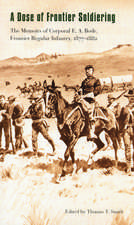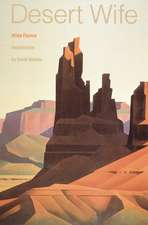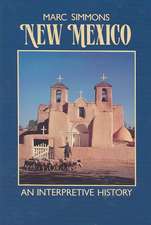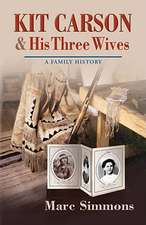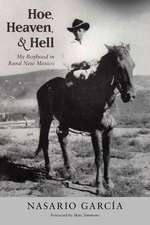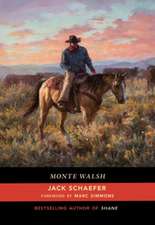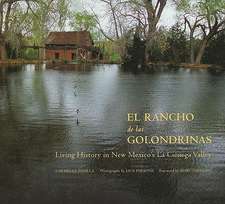Witchcraft in the Southwest: Spanish and Indian Supernaturalism on the Rio Grande
Autor Marc Simmonsen Limba Engleză Paperback – 29 feb 1980
Preț: 104.54 lei
Nou
Puncte Express: 157
Preț estimativ în valută:
20.01€ • 20.73$ • 16.70£
20.01€ • 20.73$ • 16.70£
Carte disponibilă
Livrare economică 01-15 martie
Preluare comenzi: 021 569.72.76
Specificații
ISBN-13: 9780803291164
ISBN-10: 0803291167
Pagini: 184
Ilustrații: Illus., map
Dimensiuni: 133 x 203 x 14 mm
Greutate: 0.22 kg
Editura: BISON BOOKS
Colecția Bison Books
Locul publicării:United States
ISBN-10: 0803291167
Pagini: 184
Ilustrații: Illus., map
Dimensiuni: 133 x 203 x 14 mm
Greutate: 0.22 kg
Editura: BISON BOOKS
Colecția Bison Books
Locul publicării:United States
Notă biografică
A professional historian, author, editor, and translator, Marc Simmons has published numerous books and monographs on the Southwest as well as articles in more than twenty scholarly and popular journals.
Recenzii
"Occasionally a truly remarkable book appears—one that takes a topic in need of discussion, thoroughly researches it, and presents credible results in a fascinating and extremely well manner. Witchcraft in the Southwest is such a volume, and as such, is a must for all readers, be they scholars, students, or others. . . . The volume devotes equal time to Spanish and Indian supernaturalism along the Rio Grande. Opening with a succinct review of the meaning and evolution of witchcraft in Europe and Spain, Simmons establishes the existence of many similar beliefs among native inhabitants of the New World. Moving chronologically to Spanish colonization, the author vividly conveys Spanish reactions to Pueblo life and religion, the fears of witches and other supernatural forces that plagued Spanish colonists. . . . Emphasizing the beliefs and nature of witchcraft rather than the actual mechanics (which are secret), he follows Hispanic communities into the late 19th century. . . . Readers learn how witchcraft fits into the Pueblo world view and how it compares and contrasts with European and Spanish varieties in such areas as motivation, types, powers, beliefs and means of acquisition. . . . Simmons’ study provides a needed overview and one that is carefully based on available ethnohistorical documents and credible anthropological data."—American Indian Quarterly
"The narrative abounds in gothic tales of the bizarre, made more intriguing because European black arts became intertwined with native cults of animal worship, superstitions, herbalism and myths. The witch craze which seized three pueblos, Nambé, Zuñi and Pecos, is graphically reported. . . . A concluding chapter discusses the legacy that still lingers on the contemporary scene. It all makes for fascinating reading."—Westways Magazine





